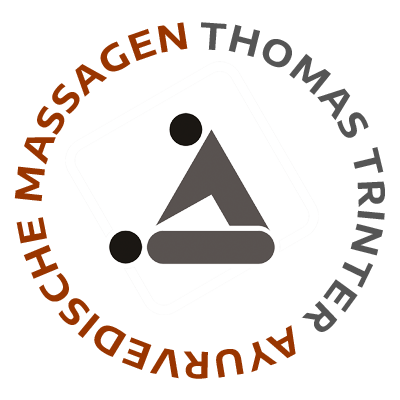For many who come to me for the first time, the rites I perform directly before the massage are unusual. On the one hand I speak a mantra especially for the massage.
 It is written in the old Indian language Sanskrit and is reproduced in Latin letters in the following:
It is written in the old Indian language Sanskrit and is reproduced in Latin letters in the following:
Abhyangam aacheren-nityam
Sa jaraashramavaatahaa
Drush’t’i-prasaada-push’tiaayuhu
Svapnasutvaktvadaardh’yakrut
Translated into German this means something like this: Everyone should have an oil massage. It delays ageing, removes tension, reduces vata, improves vision, gives the body strength and stability, prolongs life, leads to peaceful sleep and improves the complexion.
After the mantra, I ask the client to apply some oil to the crown of the head, ears, navel and the middle of the soles of the feet. Why? This is where the essential points where Vata accumulates are located. Vata stands for the principle of mobility in the body. This concerns the joint functions, the digestive system or, for example, the functions of the nervous system. Health problems occur when Vata is imbalanced. Applying the oil to the main points of Vata is intended to calm Vata that is out of balance. It is therefore used as a health prophylaxis.
If you find all this scary, you might want to stick to the following story: The physicist and Nobel Prize winner Wolfgang Pauli once visited (the Danish physicist) Niels Bohr in his country house and saw that a horseshoe was hanging over the entrance door. “Professor!” he said. “You? A horseshoe? Do you believe in it?” Niels Bohr is said to have replied: “Of course not. But you know, Mr Pauli, it should also help you if you don’t believe in it.”

 Deutsch
Deutsch